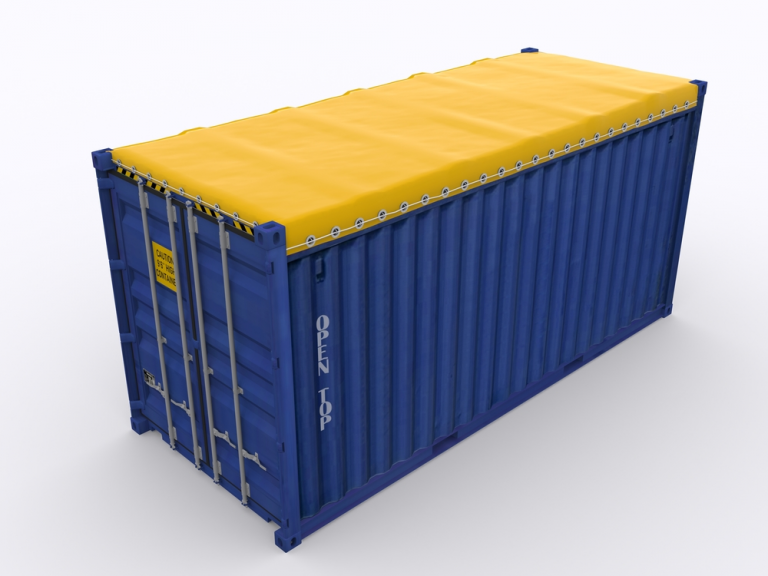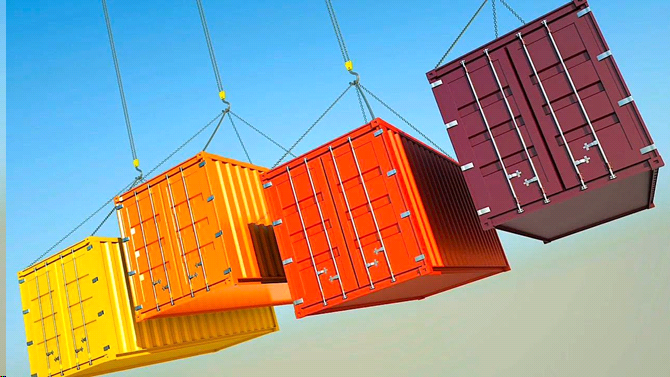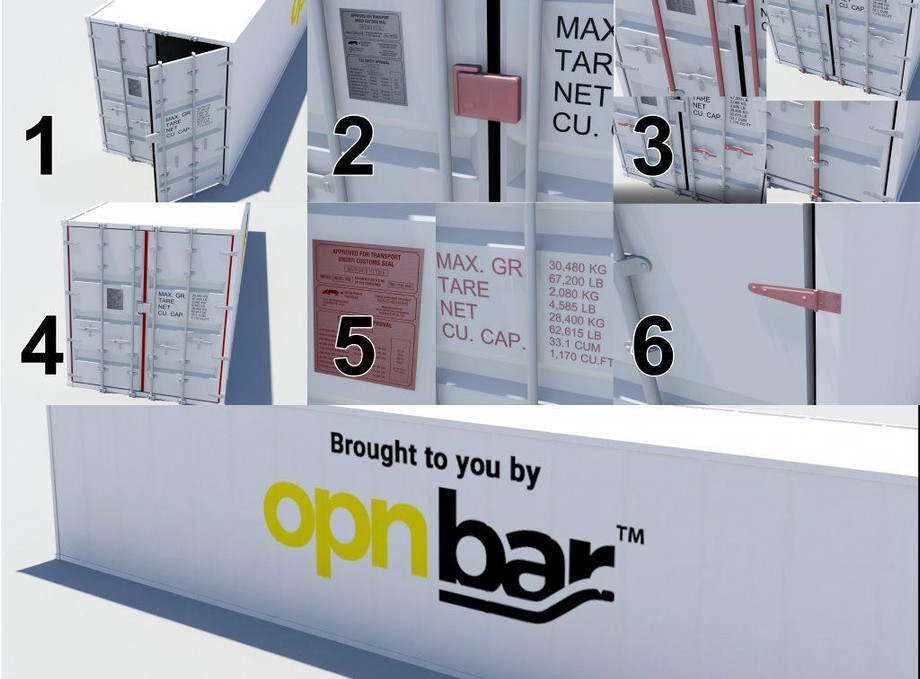
Shipping containers, those sturdy metal giants, have quietly transformed the global economy over the years. While their massive presence and role in logistics are well-known, what often goes unnoticed are the innovative features that make them incredibly versatile. One such unsung hero is the shipping container handle. These humble components play a pivotal role in the efficient transport and handling of goods worldwide. Here we'll delve into the intriguing world of shipping container handles and explore their evolution and future prospects.

The Basics
Shipping container handles, often referred to as twist locks, are designed to secure containers during transit. They serve as the connection points for various transport modes—ships, trucks, trains, and cranes. These handles, which come in various shapes and sizes, allow containers to be safely stacked on top of each other and securely attached to transport vessels.
Manual to Mechanical
In the early days of shipping containers, handling was a labor-intensive task. Dockworkers used brute force and manual labor to load and unload containers. However, with the advent of technology, container handles underwent a significant transformation. The introduction of mechanical twist locks made handling more efficient and less physically demanding.
Standardization
Standardization of container dimensions and the twist lock system has been crucial for global trade. ISO (International Organization for Standardization) standards ensure that container handles are interchangeable, making it possible to move containers across different modes of transportation and between various carriers seamlessly.
Safety and Ergonomics
Modern container handles are designed with safety and ergonomics in mind. They feature ergonomic grips to reduce strain on workers and minimize the risk of injuries. The development of safety mechanisms within handles ensures that containers are securely locked, preventing accidents during transport.
Future Innovations
The future of shipping container handles is poised for exciting developments. As automation and technology continue to advance, we can expect handles that are integrated with sensors and smart technology. These "smart handles" could monitor the condition of the container, track its location, and communicate with logistics systems to optimize routing and maintenance.

Sustainability
In an era of increased environmental awareness, the materials used in container handles are also evolving. We may see handles made from sustainable materials or equipped with energy-saving features, such as solar-powered sensors or RFID technology for tracking and monitoring.
Versatility
Shipping container handles are no longer just for securing containers. They are being repurposed and adapted for other uses. Handles can be modified to include hooks for lifting heavy objects, making them valuable tools in various industries beyond shipping.
Shipping container handles may seem like inconspicuous components in the grand scheme of global trade, but they are integral to the smooth functioning of the logistics industry. Their evolution from manual to mechanical, coupled with advancements in safety and ergonomics, has made the handling of containers more efficient and safer for workers. As we look to the future, container handles will continue to adapt, incorporating smart technology and sustainable materials to meet the demands of an ever-evolving world of shipping and logistics. These small but significant innovations will play a crucial role in shaping the future of global commerce.
Shipping containers, once solely associated with maritime transportation, have evolved into versatile structures that have found applications far beyond their original purpose. The availability of shipping containers for sale has opened up a world of possibilities, offering cost-effective and customizable solutions for a wide range of needs. Here, we explore the unique features and potential applications of shipping containers, highlighting their benefits in various industries.
The Rise of Shipping Containers
The evolution of shipping containers is a testament to human ingenuity and the drive to revolutionize global transport. From their humble beginnings as simple cargo boxes to the highly sophisticated, standardized units we know today, shipping containers have played a pivotal role in shaping the modern world of logistics. In this article, we will explore the fascinating journey of their evolution, highlighting key milestones and innovations that have made them indispensable in the realm of global transport.
The Birth of Containerization
The concept of containerization, the process of efficiently packing goods into standardized containers for transportation, was first introduced in the early 20th century. However, it was not until the mid-20th century that containerization became a global phenomenon. In 1956, the International Organization for Standardization (ISO) established standard container sizes, marking a crucial moment in the history of shipping containers.
Standardization and Intermodal Transport
Standardized container sizes allowed for the seamless transfer of goods between different modes of transport—ships, trucks, trains, and planes. This intermodal capability revolutionized global transport, making it faster, more efficient, and cost-effective. The adoption of standardized containers was a game-changer for the shipping industry.
The Box that Changed the World
Malcom McLean, often referred to as the father of containerization, deserves special mention. In 1956, McLean's company introduced the first container ship, the SS Ideal X, heralding a new era in shipping. This single innovation reduced the time and labor required to load and unload ships, leading to significant cost savings and a boost in global trade.
Container Diversity
As global trade continued to expand, so did the diversity of shipping containers. Beyond the standard 20-foot and 40-foot containers, specialized containers for refrigerated goods, hazardous materials, and oversized cargo were introduced. This diversification allowed for the transportation of a wide range of goods, from electronics to perishable goods.
High Cube and Advanced Materials
The introduction of high cube containers, which are taller than standard containers, provided additional cargo space. Advanced materials such as lightweight aluminum and reinforced composites reduced the weight of containers, allowing for greater payload capacity and fuel efficiency.

Smart Containers and Tracking Technology
In the digital age, shipping containers have become "smart." Integrated sensors and tracking systems provide real-time data on container location, temperature, humidity, and security. This technology has improved supply chain visibility, security, and overall efficiency.
Sustainable Containers
As environmental concerns grow, the shipping industry is exploring sustainable container solutions. Container manufacturers are experimenting with eco-friendly materials and designs, aiming to reduce the carbon footprint of global transport.
The Future
Looking ahead, the evolution of shipping containers is far from over. Concepts like autonomous container ships, automated loading and unloading systems, and even floating container terminals are on the horizon. The industry continues to adapt to the changing landscape of global trade and transportation.
Conclusion
The evolution of shipping containers mirrors the evolution of global commerce itself. From their introduction in the early 20th century to their role as the backbone of modern logistics, shipping containers have played an instrumental role in reshaping our world. As we stand on the threshold of a new era in global transport, one thing is clear: shipping containers will continue to evolve, driving innovation and efficiency in the ever-expanding realm of global trade and logistics.
Please visit:- https://www.youtube.com/watch?v=N3pUEuZRg9c&feature=emb_title
Mailing Address:
10053 Whittwood Dr, Suite
11284 Whittier,
CA 90603 USA
657.6.OPNBAR (657-667-6227)
Website:- https://www.shippingcontainertool.com/what-is-a-shipping-container/
























